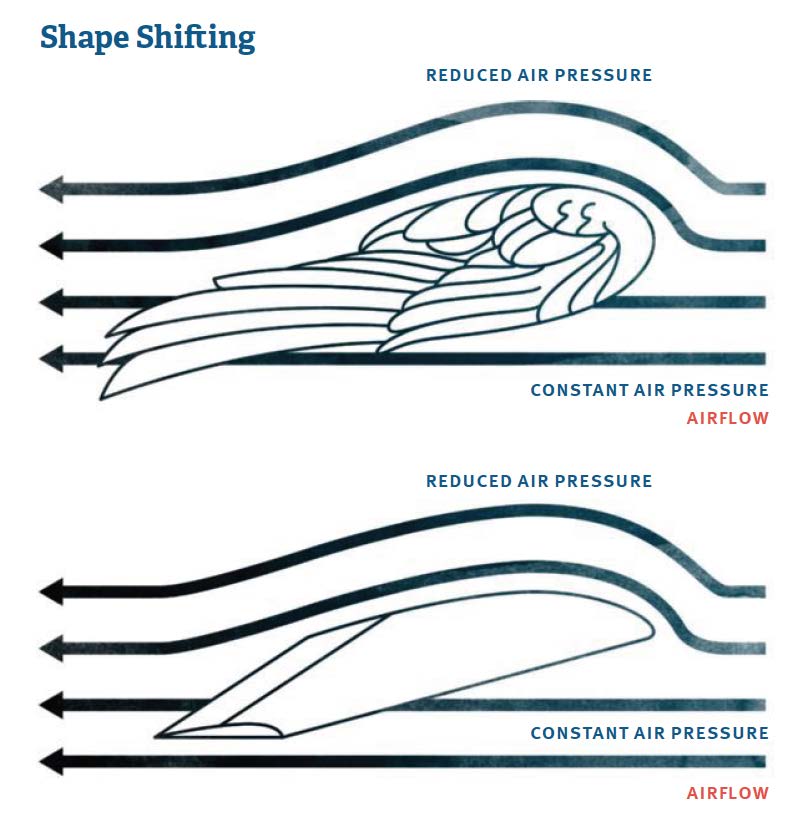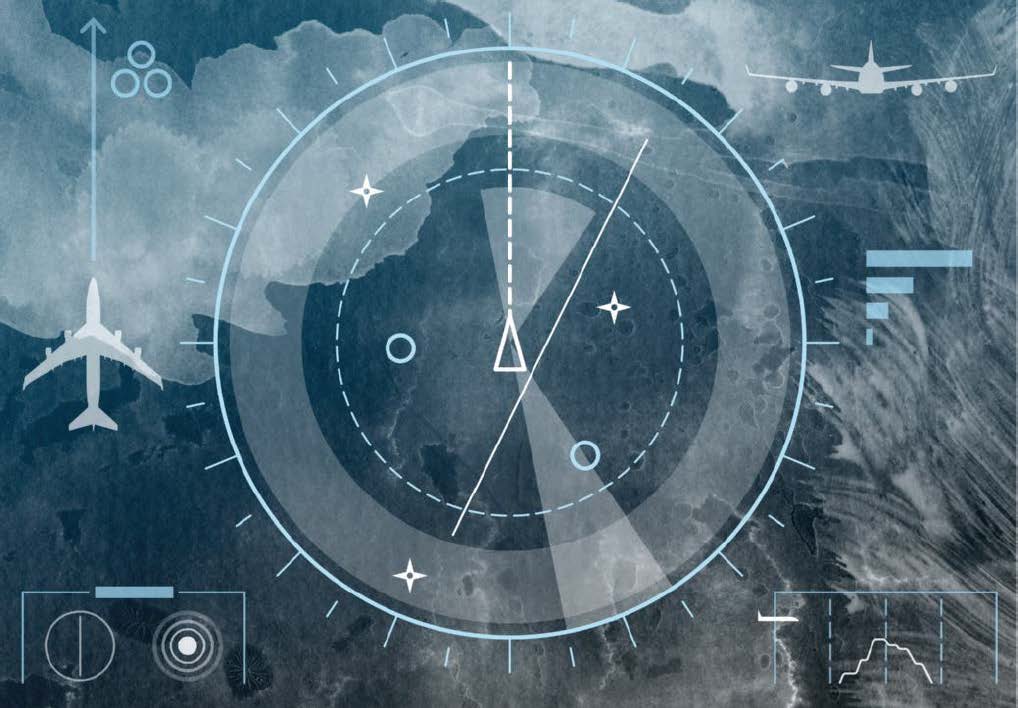Altitude Adjustment
Share
This article originally appeared in The Technology Issue of APEX Experience.
We see the news reports at least a few times a year: A commercial flight finds itself hitting severe or extreme turbulence and anyone who isn’t belted down ends up getting hurt. The airplane diverts to the nearest airport, and video of the chaotic cabin instantly makes its way around the Internet. The media portrays the event with shock and dismay, demanding to know why nothing can be done to prevent it.
Though these types of incidents are rare, light and moderate turbulence is very common, occurring on thousands of flights every day. Most of the time, the worst thing that happens is your ginger ale spills. But turbulence also causes frayed nerves and restricts passenger movement around the cabin. In addition, it can send aircraft off the flight path or make them change altitudes, lengthening flight times and increasing emissions. It’s enough of an issue that plenty of research has been and will continue to be done to help mitigate the impact of turbulence. Is it possible that flights will be turbulence-free in the future? Yes it is.
Rock and Roll
Turbulence occurs when an aircraft passes through unstable air. More often than not, it’s merely the result of weather patterns. Gusty winds, nearby thunderstorms, and passing fronts can all cause a little rocking and rolling at altitude. Turbulence can also be caused by other aircraft in the vicinity that disturb the air (wake turbulence). Regardless of how it’s caused, the result is the same. The airplane starts to move around, which is at best inconvenient and at worst, dangerous.
Throughout most of the history of aviation, the proactive response to turbulence has been to try to avoid it. Pilots study weather maps and look for ways to predict what lies ahead. They rely on ride reports from fellow pilots aloft, and they alter their courses as needed based on that subjective information.
Some airlines have prioritized avoiding areas of turbulence. Northwest Airlines (now merged into Delta Air Lines) was one of those airlines.
Turbulence Plots were famous for helping aviators avoid rough weather.
Forecasting Turbulence
More sophisticated technology has been rolled out by weather radar companies who are helping aircraft get a better vision of what lies ahead in real time. If they see turbulence, they can avoid it. Airlines and manufacturers are getting into the act as well. Delta recently partnered with Boeing on its ecoDemonstrator aircraft to try a new forecasting technology. According to Delta spokesperson Kate Modolo, the technology is only being tested, but Delta is hoping to be able to incorporate it in the future.
This technology is encouraging, but what if it was unnecessary? Instead of working on ways to avoid turbulence, some are looking at ways to simply eliminate the effect of it.
Birds of a Feather
For many years, researchers have been fascinated by bird movements. By studying birds, scientists can get a more complete understanding of how wings can better handle turbulent airflow. After all, birds can fly steadily in the harshest of windy conditions without fail. If some of the principles birds use to fly can be translated to aircraft, then turbulence reduction can be achieved in a dramatic fashion.
By studying birds, scientists can get a more complete understanding of how wings can handle turbulent airflow.

Professor Simon Watkins has been supervising research in this area for the Unmanned Systems Research Team at RMIT University in Melbourne, Australia. Watkins notes that while “current aircraft sense the effect of the disturbance and then apply opposing control,” birds operate differently.
Birds begin to “feel the effect of the disturbance early” through the movement of feathers and “sensory parts of the wing.” That allows the birds to adjust their wing configuration quickly, before turbulence is even felt.
For birds, all this is as natural as flight itself, so it’s a tall task to try to incorporate these types of animal instincts into a man-made object. Boeing, however, has already started.
Sensory Detection
The 787 has been built with what Boeing spokesperson Bret Jensen calls a “unique system of sensors [that] scan the air in front of the airplane and anticipate possible turbulence.”
When that information has been received, computers can interpret the expected movements and tell the airplane to compensate by manipulating the control surfaces. According to Jensen, “Passengers have reported an overall smoother ride than other airplanes of type.”
Boeing considers its technology to be proprietary and won’t share additional details, but Professor Watkins is more than happy to discuss his group’s research.
The challenge for Watkins is greater than for Boeing since his focus is on smaller, lighter airplanes. Smaller airplanes with smaller control surfaces are more prone to heavy, turbulence-related upsets than large commercial aircraft. In other words, the most difficult challenge is being tackled first, so that the application to larger aircraft becomes simpler.
Today, the research team has affixed carbon fiber sensors all over the wings. Additional sensors were placed further forward on the aircraft, some reaching out, in order to achieve the goal of measuring relevant turbulence as early as possible.
The goal is to allow lasers to be used to detect changes in airflow instead of physical sensors.
These sensors created not only an awkward look for the airplane, but a potential hazard for people walking around the aircraft on the ground. But they are extremely light, and weight is important. The eventual goal is to find a way to use LIDAR-based sensors, allowing lasers to be used to detect changes in airflow instead of physical sensors. According to Watkins, however, “they’re quite massive,” so they aren’t ready for use in this environment just yet.
Ultimately, LIDAR would allow the sensors to move a bit further forward, giving a split second of additional time to prepare the counteracting measures.
Once an upset is detected, commands are sent to the wing surfaces to make adjustments as needed. But are the current wing surfaces enough to be able to adequately control the movements?
Wing Theory
You may be envisioning the need for large flapping wings as we saw on some early-era aircraft experiments, but that’s not what needs to happen here. In fact, while birds have incredibly flexible wings, our technology is nowhere near allowing that effect to be produced for aircraft. Besides, it’s likely unnecessary for this application. Birds need flexible wings in order to hold steady while hovering, but for simply smoothing a ride, not much needs to change from what we see on airplanes today.
Watkins believes that “if you take a standard wing with large and powerful ailerons, there’s more than enough control authority.” The key here is that you don’t need big swooping movements. You just need “small deflections” as long as you know what’s coming in advance.
So far, the research has produced successful tests. While the impact of turbulence will still be felt for years to come, we’ve already seen manufacturers successfully implement turbulence reduction technology. Companies like FlexSys have successfully implemented one-piece, shape-shifting wings on aircraft. These models could potentially replace the traditional flaps on current wing designs, allowing for a significant improvement in the passenger experience and hopefully, the eventual elimination of the impact of turbulence altogether.




